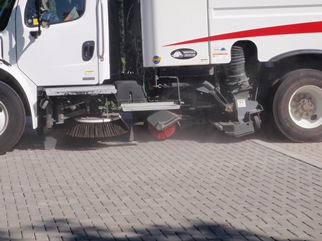Street Cleaning
 The practice of street cleaning has long been used as a method to reduce road pollution and enhance the aesthetic appeal of urban streets. However, the technique fell out of favour as a stormwater treatment practice in the early 1980s after studies conducted through the U.S. National Urban Runoff Program concluded that street cleaning had little effect in reducing pollutant loads. A large part of the reason for their poor performance was attributed to the inability of conventional sweepers to pick up fine dust and sediment particles.
The practice of street cleaning has long been used as a method to reduce road pollution and enhance the aesthetic appeal of urban streets. However, the technique fell out of favour as a stormwater treatment practice in the early 1980s after studies conducted through the U.S. National Urban Runoff Program concluded that street cleaning had little effect in reducing pollutant loads. A large part of the reason for their poor performance was attributed to the inability of conventional sweepers to pick up fine dust and sediment particles.
Newer regenerative air and vacuum assisted street cleaners offer greater promise in picking up coarse and fine street dust. Studies have shown that some of these newer models can provide a higher level of pollutant removal than the older mechanical street cleaners, while also helping to improve air quality.
The type of street cleaner used is not the only factor determining the effectiveness of street sweeping programs for stormwater pollution control. Other factors include precipitation patterns, traffic volume, access to source areas, frequency and timing of cleaning, the texture and hydraulic characteristics of the roadway, and the nature of the contaminants. Finer particles are generally more difficult to capture, and some common road contaminants, such as oils and grease, are not susceptible to removal with street sweepers.
The cost-benefit of such programs depends largely on the effectiveness of the sweeper used and proper execution of the program. A street cleaning program with optimal efficiency can yield a significant cost savings to the municipality in comparison to other popular stormwater management technologies.
